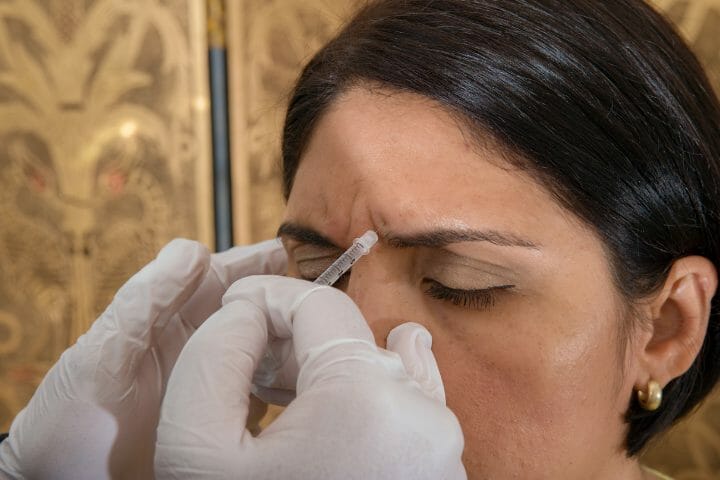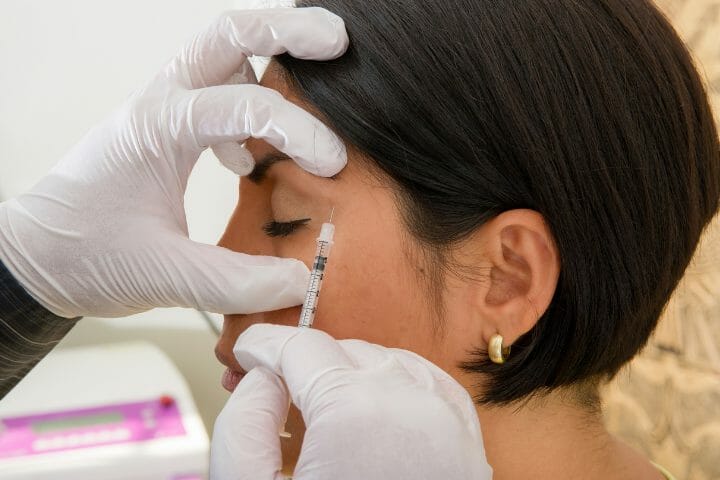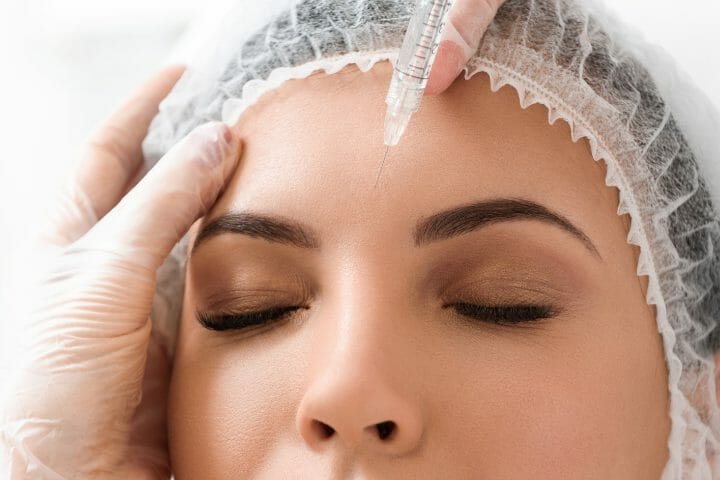What lasts longer Botox or Dysport? This is a question that many people have asked, and there is no definitive answer. Some people say that Botox lasts longer, while others believe that Dysport lasts longer. Let us explore this in more detail in the article below.
Contents
Between Botox and Dysport, the truth is, what works depends on the individual. What may last for one person may not last as long for another. But a study shows that the effects of Dysport last longer than Botox. So, which one is right for you? Let’s look at both treatments to see which one might be the best option for you.

What is Dysport?
Dysport is a muscle relaxant used to treat various conditions that involve overactive muscles. It works by blocking the nerve signals that tell the muscles to contract. This can help reduce spasms, wrinkles, and other unwanted muscle movements.
Dysport has been approved for use in adults and children at least two years old. It is available in injection form and is injected directly into the affected muscle or area.
Common side effects of Dysport include pain, swelling, bruising, and headache. More severe side effects are rare but may have problems with vision, difficulty swallowing, and muscle weakness.
Dysport should not be used if you are allergic to it or any ingredients. You should also let your doctor know if you have ever had an allergic reaction to similar medication. Dysport is not expected to harm an unborn baby.
However, it is unknown if it passes into breast milk or could harm a nursing baby. You should not use Dysport if you are pregnant or breastfeeding without first talking to your doctor.
You might like to read: Can You Get Botox While Pregnant? 3 Reasons Why You Should Not
What is Botox?
Botox is a neurotoxin that is used to paralyze muscles temporarily. It is most commonly used to treat wrinkles but can also be used for migraines, excessive sweating, and other conditions.
Botox restricts the transmission of signals from the nerves to the muscles, causing the muscle to relax. Its effect typically last for three to four months.
Some risks associated with Botox include allergic reaction, difficulty swallowing, and muscle weakness. It would help if you talked to your doctor before using Botox to ensure that it is the proper treatment.
If you are interested in learning more about Botox or making an appointment with a doctor who offers this treatment, please contact us today.

Dysport or Botox What’s the Difference and Which Lasts Longer?
Whether you’re looking to smooth out wrinkles or prevent them from forming in the first place, you may be considering Dysport or Botox. But what’s the difference between these two popular injectables, and which one will last longer?
Dysport and Botox are both neuromodulators that work by temporarily paralyzing the muscles that cause wrinkles. Dysport is made with botulinum toxin type A, while Botox contains botulinum toxin type B.
While both injectables effectively reduce wrinkles, some people prefer Dysport because it diffuses more easily and can provide a more natural-looking result. Additionally, Dysport may kick in sooner than Botox, although the effects of both typically last for about 3-4 months.
You might like to read: 100 Units Of Dysport Equals How Much Botox? Find Out The Conversion Ratio
Pros and Cons of Dysport vs. Botox
Both Dysport and Botox are popular anti-aging treatments, but they each have their unique pros and cons. Here is a breakdown of some of these differences:
Cost
Dysport tends to be more affordable than Botox because less Dysport is needed per treatment area. However, since it also wears off faster (usually within three months), you may need more frequent injections to maintain your results.

Effectiveness
Many people report that Dysport is more effective than Botox at minimizing the appearance of fine lines and wrinkles.
Ease of use
Dysport and Botox can treat a wide variety of areas on the face, but it can be challenging to get the right amount of Dysport or Botox into smaller treatment areas, like around the eyes or mouth. This can make these treatments less effective in those areas.
Overall, Dysport and botox are effective anti-aging treatments that can help you look younger longer. However, it’s essential to work with your doctor to choose the best one for your specific needs and goals.
Talk to your doctor about which option is right for you to discover the pros and cons of Dysport vs. botox.

Dysport vs. Botox Cost
Dysport and Botox are popular injectable treatments that can help smooth out wrinkles. But how do they compare in terms of cost?
Dysport costs about $4 per unit, while Botox costs about $12 per unit. So if you’re looking to save money on your injectable treatment, Dysport may be the better option.
How fast does Dysport start working?
Several factors can affect how quickly Dysport starts to work, including:
- The amount of product used: More products will typically result in faster results.
- The specific muscles treated: Some muscles respond better to Dysport than others.
- The individual’s metabolism: Some people metabolize Dysport faster than others.
However, most people will start to see some results from Dysport within 3-5 days of treatment. These results will continue to improve over the next 2-3 weeks as the full effect of the product takes place.
You might like to read: What Certification Do You Need To Do Botox?
Why the Results From a Dysport Injection and a Botox Injection Last Differently
Both Dysport and Botox work by blocking the nerve signals to the muscles in the treated area. This causes those muscles to relax, which then smooths out skin creases over time as muscle movement is reduced. Although each treatment works similarly, some key differences impact their durations of action.
While both Dysport and Botox begin with temporary paralysis of muscle contraction within hours of injection, Botox may not continue to provide these results for more than four months. On the other hand, Dysport can last up to six months before additional treatments may be needed.
So why does this difference exist? One reason may be that Dysport diffuses more quickly than Botox, so it may spread to a larger area and have a longer-lasting effect. Additionally, because Dysport is a bigger molecule than Botox, it may take longer for the body to break it down.
If you’re considering injectable treatments to improve your appearance, talk to your doctor about which option – Dysport or Botox – may be right. Depending on your goals and desired results, one of these treatments may be a better fit than the other.

Is Botox Better Than Dysport In Certain Facial Areas?
Botox and Dysport are two of the most popular injectable wrinkle treatments. But which one is better? It depends on the individual and the specific facial area being treated.
Some people prefer Botox because it works slightly faster than Dysport. However, both treatments typically take effect within a week or two. Some studies show that Botox may last longer than Dysport, although results vary from person to person.
Botox may be better for treating crow’s feet, while Dysport may be more effective for reducing wrinkles on the forehead to specific facial areas. Again, it ultimately depends on the individual’s preferences and goals.
Which is more popular?
Dysport may be a good option for those with moderate or severe frown lines when treating your wrinkles. On the other hand, Botox can treat many different types of wrinkles, including crow’s feet and forehead creases and laugh Maker line stretches!

Frequently Asked Questions
1. How many units of Dysport is equal to Botox?
Dysport and Botox are both neuromodulators used to temporarily improve the look of wrinkles. While they are similar, there are some critical differences between the two.
One significant difference is that Dysport typically requires fewer units to achieve the desired results. In general, you will need about 50% fewer units of Dysport than you would Botox.
Dysport tends to work more quickly than Botox, so you may see results in as little as 24 hours after your treatment.
However, both neuromodulators typically last for about 3-4 months before further treatments are necessary. This means that treatment with Dysport can often be more affordable than one with Botox.
2. What is the longest Botox can last?
Several factors can influence how long Botox lasts in your body, such as the dose and location of the injections, your metabolism, age, health status, and more.
For example, if you receive a higher dose or have prominent muscle movement in one area of your face (such as around your eyes), Botox may only last for a few weeks rather than months.
Suppose you want to prolong the effects of your treatment. You can do a few things in that case, such as avoiding rubbing or massaging the treated area, avoiding strenuous exercise or heat exposure immediately after injections, and not drinking alcohol in excess. Overall, Botox tends to last longer in younger patients with less severe signs of aging.
You might like to read: How Much Do Botox Nurses Make?
Wrap Up
The jury is still out in which one lasts longer, botox or dysport. But one thing is for sure – there are proponents at both ends. And in this article, we have tried to give you both sides of the argument.
Thank you for reading, we hope you enjoyed the content! If you have questions, please write to us in the comments box and we will get back to you as soon as possible.
